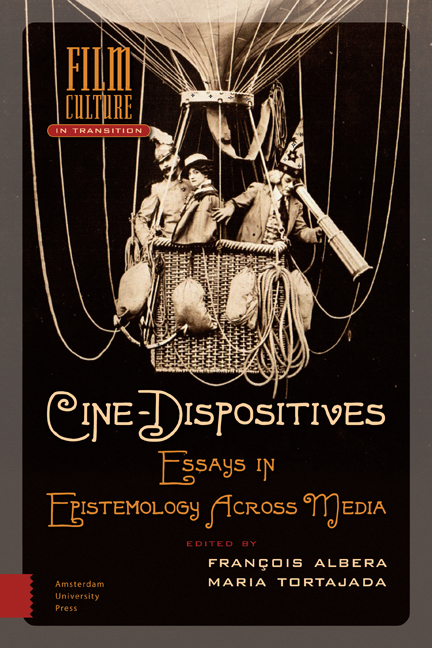Between Knowing and Believing: The Cinematic Dispositive After Cinema
Published online by Cambridge University Press: 10 February 2021
Summary
Introduction
The Imagined Futures research project, coordinated with two of my colleagues (Wanda Strauven at the University of Amsterdam, and Michael Wedel at the University of Film and Television, Potsdam), concerns itself with the conditions, dynamics and consequences of rapid media transfer and transformation. “Media” in our case refers in principle to all imaging techniques and sound technologies, but cinema has provided the conceptual starting point and primary historical focus. While changes in basic technology, public perception and artistic practice in sound and image media may often evolve over long historical cycles, our main working assumption is that there are also factors, not of steady and gradual process, but moments when transfer occurs in discontinuous, unevenly distributed fashion, during much shorter periods of time, and with mutually interdependent determinations.
Imagined Futures initially identified two such relatively abrupt periods of transformation taking place across a broad spectrum of media technologies and social developments: the period between the 1870s and 1900, and the period between 1970 and 2000. The first witnessed the popularization of photography, the emergence of cinema, the international, transatlantic use of the telegraph and the domestic use of the telephone, the invention of radio and of the theories as well as the basic technology of television. The second period saw the consolidation of video as a popular storage medium and avant-garde artistic practice, the rise of installation art and its hybridization with cinema, the universal adoption of the personal computer, the change from analogue to digital sound and image, the invention of the mobile phone and the emergence of the Internet and the world wide web.
A key characteristic of such periods of rapid media change is the volatility, unpredictability and contradictory nature of the dynamics between these technologies’ practical implications (such as industrial uses and the resulting potential for economic profit), their perception by the popular imagination (in the form of narratives of anxiety, of utopia, dystopia and fantasy) and the mixed response (eager adoption or stiff resistance) from artists, writers and intellectuals. These shifting configurations among different agents offer a rich field of investigation for cultural analysis, posing methodological challenges and requiring specific case studies.
- Type
- Chapter
- Information
- Cine-DispositivesEssays in Epistemology Across Media, pp. 45 - 72Publisher: Amsterdam University PressPrint publication year: 2015
- 3
- Cited by



